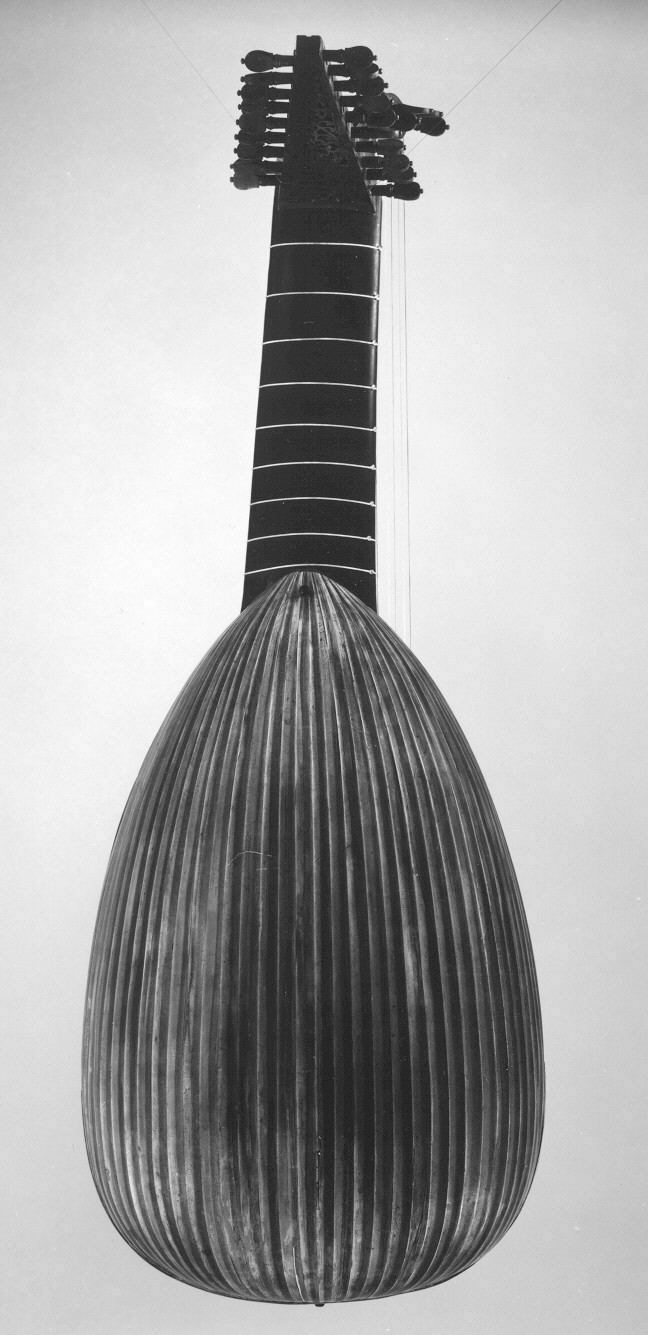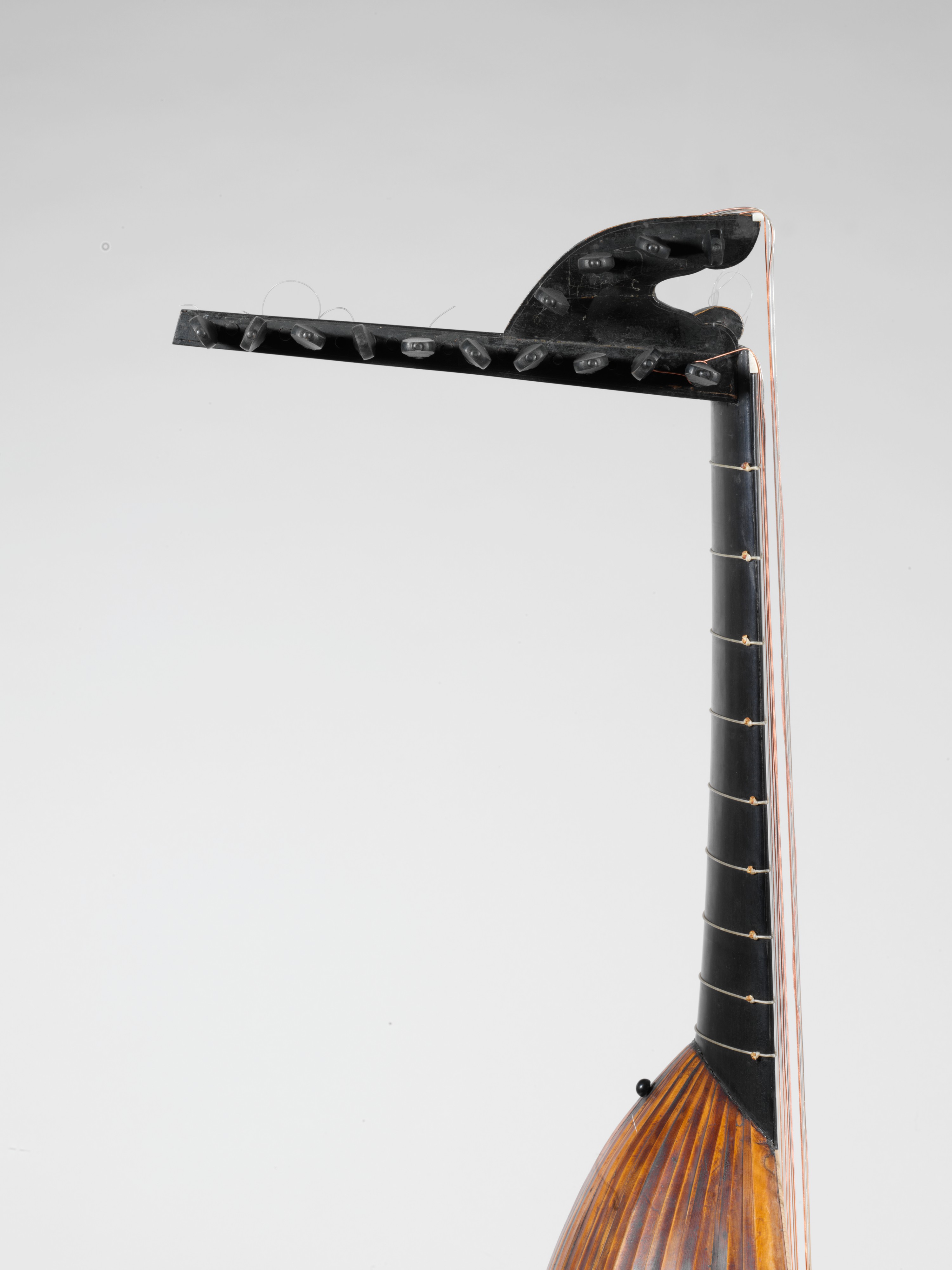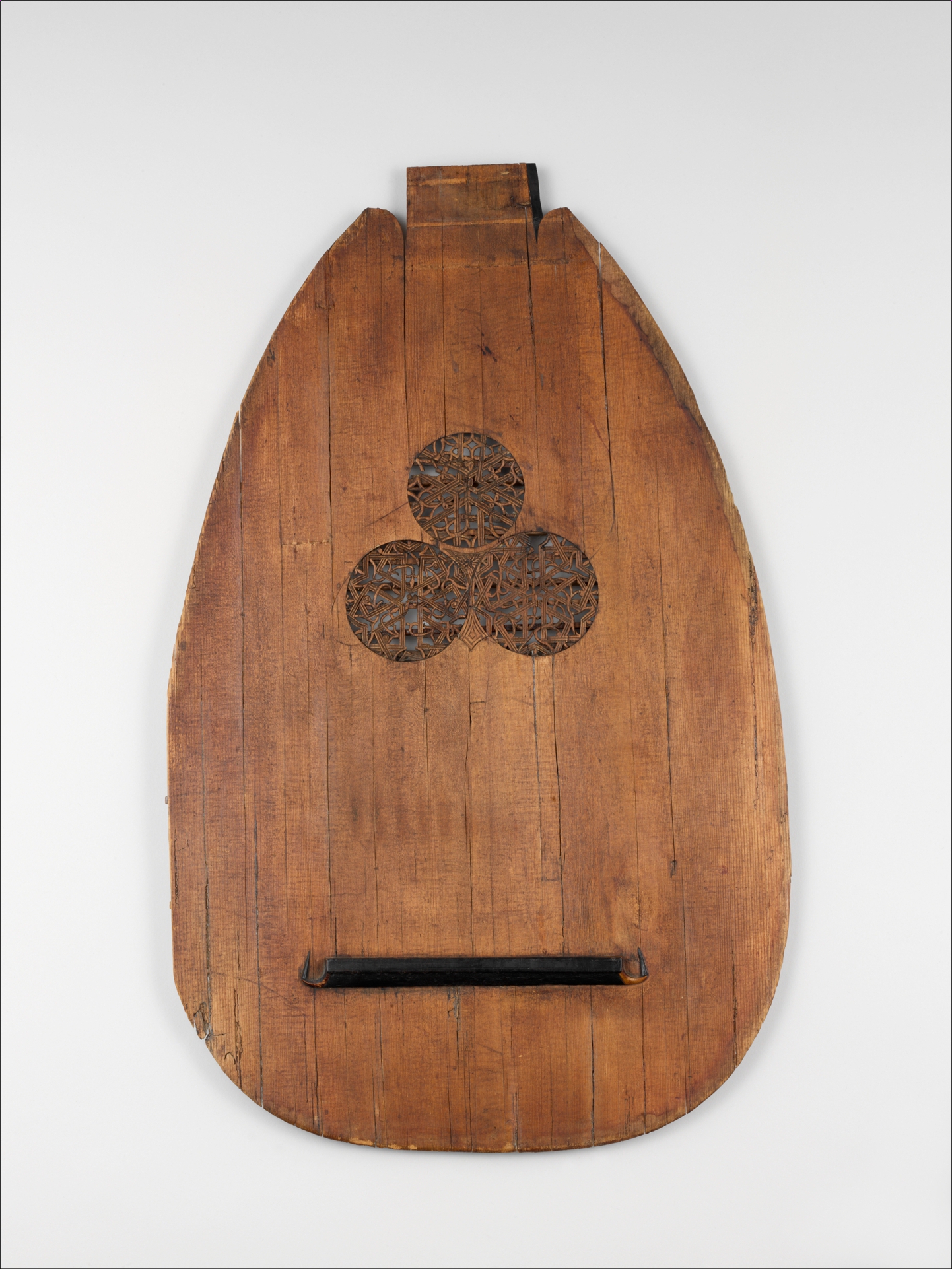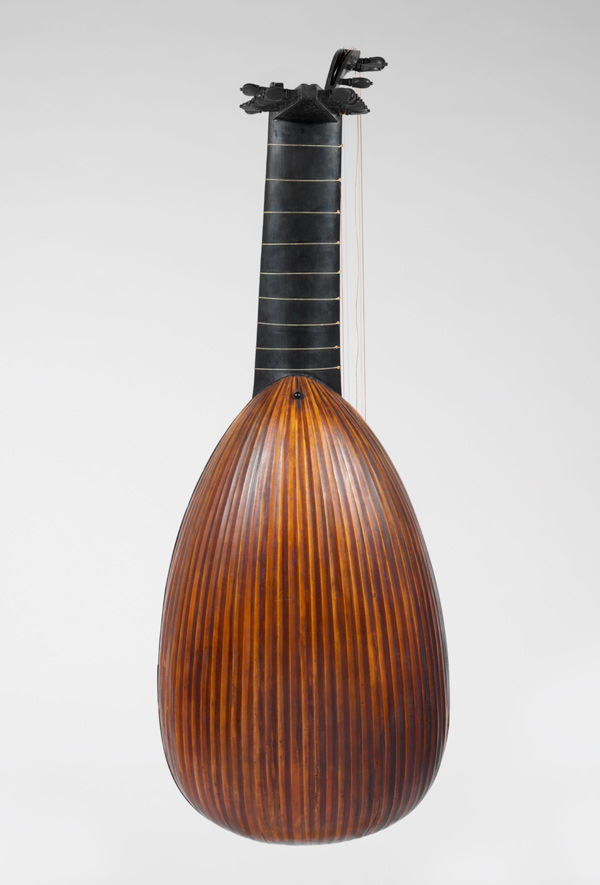Lute
Attributed to Wendelin Tieffenbrucker German (active Italy)
This lute was constructed as a bass instrument with eight or ten courses. As musical styles changed, lutes were often updated; this instrument was altered to its current thirteen courses of strings with four open bass strings. The popularity of the lute created a market for specialized craftsmen. The earliest lute-making center was in the town of Füssen, Bavaria, where a guild was established in the sixteenth century. Guild restrictions and upheavals caused by regional wars led many German lute makers to move to Italy. Originally from Bavaria, the Tieffenbrucker family became the most important dynasty of lute makers. Their specialty was the use of narrow yew wood staves to form the bowl of the lute, such as the thirty-seven bicolor yew staves on this instrument.
#Menuet by Silvius Leopold Weiss Played by Dennis Cinelli Darren O'Neill, engineer June 11, 2007 Musical Instruments East Gallery (India)
-
Menuet by Silvius Leopold Weiss Played by Dennis Cinelli Darren O'Neill, engineer June 11, 2007 Musical Instruments East Gallery (India)
-
Lahcrimae by John Dowland, played by Christopher Morrongiello, 2015.
-
9461. Lute
Playlist
Due to rights restrictions, this image cannot be enlarged, viewed at full screen, or downloaded.
This artwork is meant to be viewed from right to left. Scroll left to view more.








